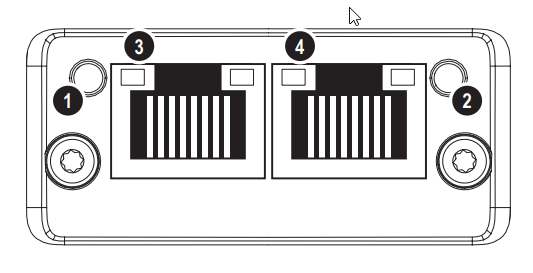13.1. PROFINET Overview¶
PROFINET, short for Process Field Network, is a widely used industrial Ethernet-based communication protocol that enables efficient and robust data exchange in industrial automation systems. It is an open standard developed and maintained by PROFIBUS & PROFINET International, an organization dedicated to industrial communication technologies. Designed to meet the growing demands of modern industrial automation, PROFINET offers real-time communication capabilities, high-speed data transfer, and seamless integration with various automation devices and systems. It provides a flexible and scalable solution for connecting field devices, controllers, sensors, and actuators across different levels of an industrial network. Magna-Power devices support are version of PROFINET with isochronous real time (IRT), which handles time-critical data exchange, capable of cycle times down to 31.25 μs and 1 μs of jitter.
Key Features and Benefits:
High Performance: PROFINET offers real-time communication with deterministic behavior, ensuring precise synchronization and timely data exchange. It supports high-speed data transfer rates, allowing for rapid control and monitoring of industrial processes.
Flexibility and Scalability: PROFINET provides a flexible network architecture that adapts to the changing requirements of industrial environments. It supports various topologies, including line, star, ring, and tree, enabling easy expansion and integration of devices and systems. Additionally, PROFINET supports the use of standard Ethernet infrastructure, simplifying network deployment and maintenance.
Seamless Integration: PROFINET enables seamless integration of different devices and systems, regardless of the manufacturer or technology used. It supports interoperability between PROFINET-enabled devices and other industrial protocols, facilitating communication between heterogeneous systems.
Diagnostics and Maintenance: PROFINET offers extensive diagnostic capabilities, allowing users to monitor the network health, detect faults, and perform maintenance tasks efficiently. It provides real-time status information, device parameterization, and remote access for troubleshooting, reducing downtime and improving overall system reliability.
Safety and Security: PROFINET incorporates robust security mechanisms to protect industrial networks and data. It supports encryption, authentication, and access control, ensuring the confidentiality and integrity of transmitted information. Additionally, PROFINET includes safety extensions for implementing safety-related applications, complying with relevant safety standards.
Integration with IT Systems: PROFINET bridges the gap between operational technology, information technology (IT) systems. It enables seamless integration with enterprise-level systems, such as Manufacturing Execution Systems (MES) or Enterprise Resource Planning (ERP) systems, providing valuable data for analysis, optimization, and decision-making.
For a more complete overview of PROFINET and underlining standards, visit PROFIBUS.com .
13.1.1. General Station Description¶
When developing or using PROFINET software to talk to a Magna-Power Electronics PROFINET module, a general station description (GSD) should be imported into PLC development software. The GSD si a custom file created by the device manufacturer that describes communication parameters, available services, data types, and device identification. The file may be requested as part of the setup process in PLC progromming or installing third-party software. The GSD can be download below and was use for Communication Examples.
13.1.2. Device LED Codes¶
In rear of the Magna-Power product is a communications interface with two exposed bi-color LEDs. The LED labeled X indicates network status and one labeled Y indicates module status, as shown in LED indicators on rear interface. Status is indicated using colors and blink patterns, as shown in the tables below.
LED State |
Description |
|---|---|
Off |
Ok, No problem detected |
Red |
Fatal event | Station name error | IP address error | Configuration error | Online (STOP) Connection error |
LED State |
Description |
|---|---|
Off |
Not initialized, no problems detected |
Red |
Major fault, (EXCEPTION-state, FATAL error, etc.) |
LED State |
Description |
|---|---|
Off |
No Link, no communications present |
Green |
Ethernet link established |
Green, blinking |
DCP identify, used by diagnostic tools to identify the node on the network |
LED State |
Description |
|---|---|
Off |
No activity |
Orange, flashing |
Activity |

Fig. 13.1 LED indicators on rear interface¶
13.2. Communication Examples¶
Work in progress